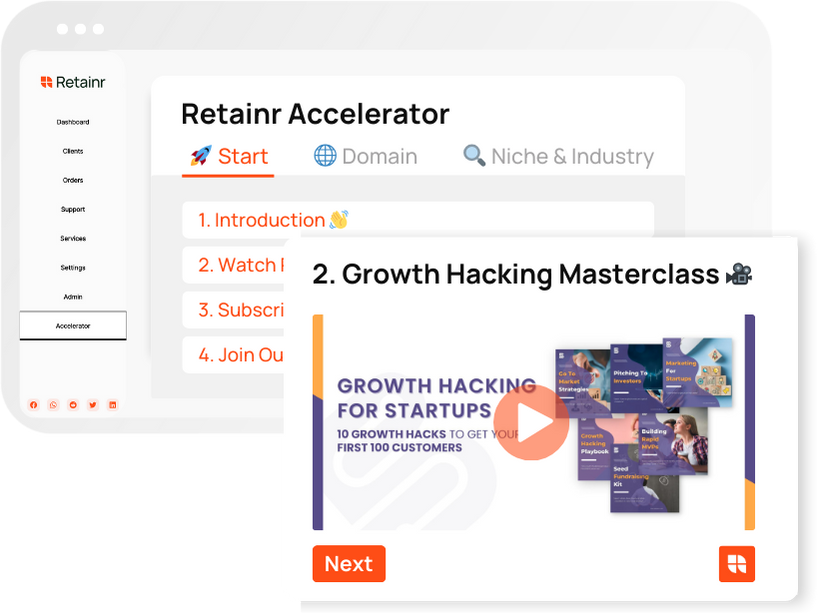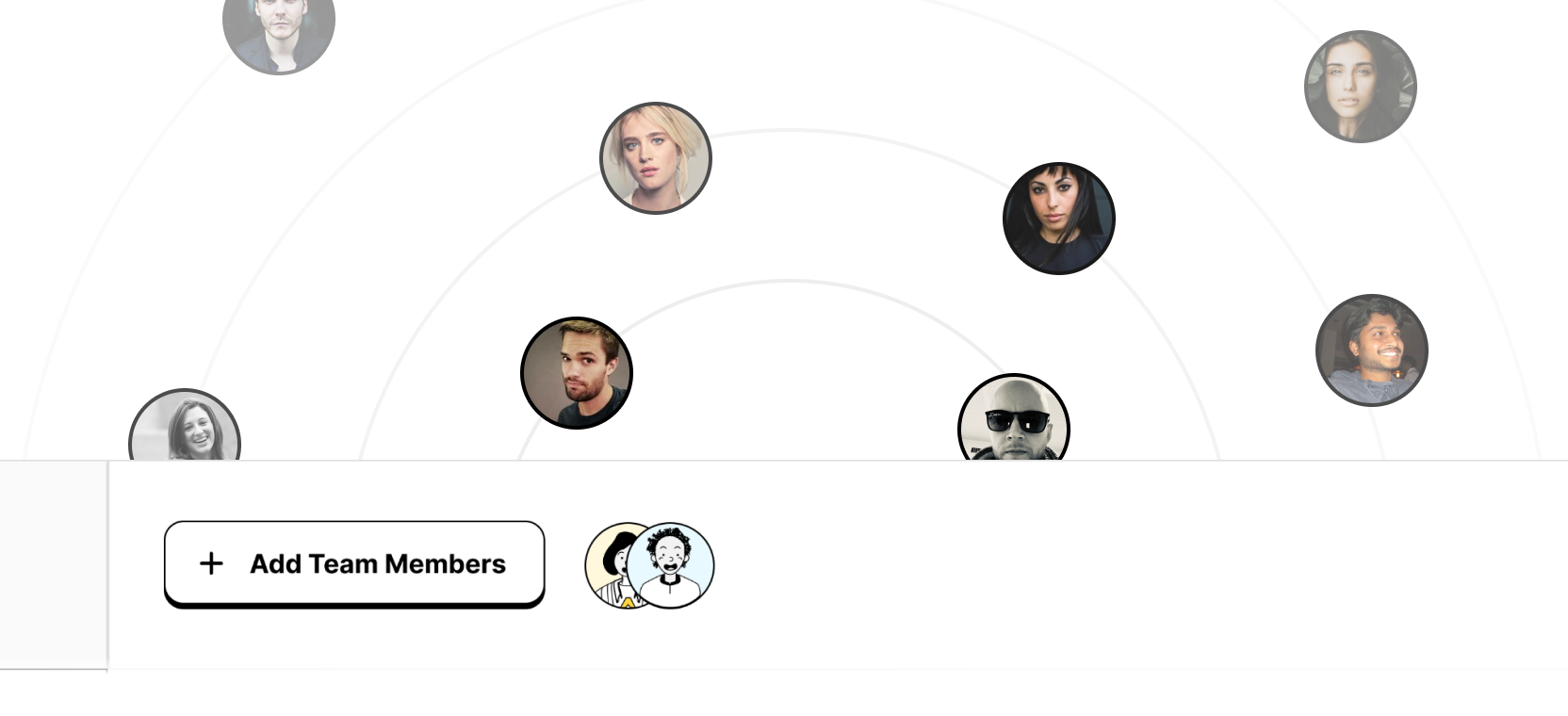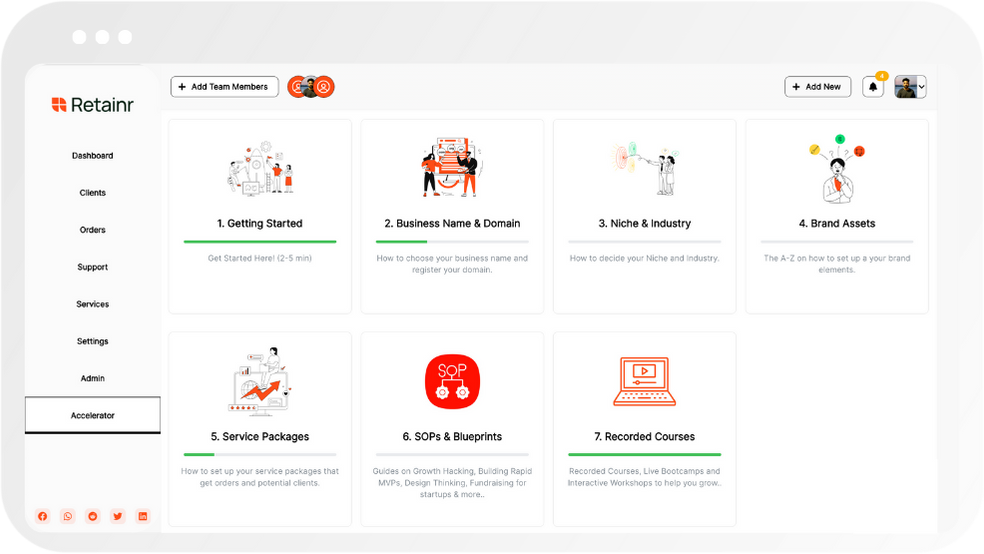
How Can Businesses Collect and Analyze Customer Feedback for Improvement
Build with Retainr
Sell your products and services, manage clients, orders, payments, automate your client onboarding and management with your own branded web application.
Get Started1. Why is it important for businesses to collect and analyze customer feedback for improvement?
Importance of Collecting and Analyzing Customer Feedback
Collecting and analyzing customer feedback is a crucial element in the improvement of businesses. This process provides valuable insights into customers' expectations, preferences, and frustrations, which can help guide the development of products, services and customer experience.
Benefits of Collecting Customer Feedback
- Customer Retention: By paying attention to customer feedback, businesses can resolve issues promptly, which can lead to increased loyalty and customer retention.
- Product Development: Feedback can reveal gaps in the market that a business can fill with new or modified products, positioning it ahead of the competition.
- Company Reputation: When a business is known for its use of customer feedback, it is viewed as customer-centric, which can significantly benefit its reputation and result in customer growth.
Importance of Analyzing Customer Feedback
| Aspect | Importance |
|---|---|
| Satisfaction Levels | Understanding customer satisfaction levels helps businesses identify areas of service that need improvement. |
| Trends and Patterns | Analyzing customer feedback helps identify trends and patterns, giving insights into recurring problems and potential areas of focus. |
| Customer Needs and Expectations | Through feedback, businesses can gain a more in-depth understanding of customer needs and expectations, aiding in business development decisions. |
2. What are the most effective methods for businesses to collect customer feedback?
Survey Forms
Surveys are a very efficient way to gather customer feedback. They can be shared via email, social media, or directly on your website. There are a variety of types and formality levels of surveys, from simple questionnaires to more detailed, in-depth market research surveys. Some techniques include:
- Email Surveys: These can be sent out to customers after their purchase or experience with the business.
- Post-Purchase Surveys: These can be given to customers immediately following their purchase to get timely, relevant feedback.
- Website Surveys: These can be found directly on the business website, allowing customers to provide feedback at their convenience.
Customer Reviews and Ratings
Reviews and ratings are public opinions voiced by customers about their experiences. They're generally found on ecommerce sites, social media platforms, or business review sites like Yelp. Here's a breakdown of the types:
- Online Review Sites: Websites such as Yelp and Google My Business allow customers to leave public reviews.
- E-commerce Reviews: Most online marketplaces enable customers to rate and review products directly on the product page.
- Social Media Channels: Customers can provide feedback or comment about their experiences on platforms like Facebook, Twitter, or Instagram.
Feedback Boxes and Live Chats
Feedback boxes and live chat tools are other effective ways for businesses to collect customer feedback. They allow for instant communication and can gather feedback at any point in the customer's journey.
| Feedback Method | Description |
|---|---|
| Feedback Boxes | These can be placed throughout your site, allowing customers to share compliments, complaints, or suggestions in a convenient manner. |
| Live Chats | These tools provide instant communication between the business and customer, giving real-time feedback. They can be used on your website or social media platforms. |
3. How can businesses ensure they are gathering truthful and useful customer feedback?
Strategies to Get Quality Feedback
The key to acquiring valid and helpful feedback is a combination of precise goal setting, the right timing, and correct framing. Businesses should outline what they are hoping to learn from the feedback they collect. This helps in formulating the right questions to ask customers. Moreover, timing is important. For instance, surveys and feedback requests should be sent shortly after interactions or transactions. This ensures that the experiences are still fresh in customers’ minds. Also, the questions or prompts should be designed in a neutral manner to avoid guiding customers into giving a particular type of feedback that could skew results.
- Goal Setting: Outline what is to be learned from the feedback.
- Timing: Send surveys after interactions while the experience is still fresh.
- Neutral Framing: Design questions that do not influence a particular response.
Ways to Confirm the Authenticity of Feedback
To ensure that collected feedback is genuine, businesses can use verification tools or engage third-party services to manage the feedback collection process. This can include checking IP addresses to ensure that multiple responses are not coming from the same source, cross-checking data with customer profiles, or using third-party survey tools that have integrated verification functionalities. Outsourcing to professional survey companies can help with expertise and providing more authentic results.
| Strategy | Description |
|---|---|
| Verification Tools | Check sources of responses to avoid repeat entries |
| Third-Party Services | Outsource to experts who can manage data collection and verification |
Methods for Maximizing Feedback Use
Once feedback is collected, businesses must utilize it adequately to be most beneficial. The initial process should include separating feedback into various categories, for example, product improvement suggestions, customer service complaints, or website navigation issues. With the categories defined, the feedback can be further analyzed to identify trends or repeated issues raised by customers. Lastly, businesses should establish a process for implementing changes based on the prioritized issues.
- Categorizing: Organize feedback into appropriate categories.
- Trend Identification: Analyze comments to identify recurring issues.
- Implementing changes: Establish a process for acting on issues raised in feedback.
4. What tools are available to assist businesses in collecting and analyzing customer feedback?
Online Surveys and Questionnaires
Collecting direct feedback from customers using online surveys and questionnaires has become an integral part of many businesses. Tools like SurveyMonkey, TypeForm, and Google Forms offer companies the opportunity to craft comprehensive surveys which can be distributed through various platforms such as email, websites, and social media. These tools provide built-in analytics to understand the data and make informed decisions.
Website Analytics and Heatmap Tools
For businesses with an online presence, Website Analytics tools such as Google Analytics and Adobe Analytics offer a wealth of information about the behavior, demographics and preferences of users. Heatmap tools like Hotjar and Crazy Egg help business owners understand user behavior on their website and where visitors spend most of their time. These tools can be pivotal in identifying potential problem areas in the user interface that might be impacting customer experience negatively.
Here is an overview of these tools:
| Tool | Type | Function |
|---|---|---|
| SurveyMonkey, TypeForm, Google Forms | Online Surveys and Questionnaires | Collect direct feedback and provides built-in analytics |
| Google Analytics, Adobe Analytics | Website Analytics | Offers insights about user behavior, demographics, and preferences |
| Hotjar, Crazy Egg | Heatmap Tools | Visual representation of users’ activity on the website |
Social Media Listening
With an increasing number of consumers using social media to voice their opinions and experiences, tracking and understanding these conversations can provide valuable feedback for businesses. Social listening tools like Hootsuite, Mention, and Brand24 allow businesses to monitor various social media channels for any direct or indirect mentions of their brand or products. This can help businesses gain real-time insights and respond promptly to positive or negative feedback.
- Hootsuite: Allows businesses to manage all social media in one place and provides brand monitoring and analytics.
- Mention: Real-time monitoring tool that informs you every time someone talks about your brand online.
- Brand24: Provides a simple solution to track and engage with anyone who mentions your brand or products.
5. How can businesses analyze the feedback they collect from customers?
Techniques Businesses can use to Analyze Customer Feedback
Once businesses have collected customer feedback, they can utilize various techniques to analyze the data strategically. These techniques include:
- Thematic Analysis: Involves categorizing the feedback into various themes based on patterns. This method can identify recurring topics suggesting areas that need improvement.
- Sentiment Analysis: Utilizes AI technology to determine customer opinions and feelings towards the company. This analysis can reveal how customers genuinely feel about the product or service, identifying potential issues.
- Trend Analysis: Involves keeping track of changes in customer feedback over time. It can reveal developing trends, providing early warning signs of problems.
Roles of Different Tools and Software
Different tools and software applications can aid in the effective analysis of customer feedback. These can include:
- Survey Tools: Tools such as SurveyMonkey and Google Forms provide simple and user-friendly platforms for creating surveys and automatically calculating results.
- Data Visualization Tools: Software like Tableau and Microsoft Power BI help businesses visualize their data, making it easier to draw conclusions and recognize patterns.
- Customer Relationship Management (CRM) systems: CRMs are vital as they store all customer data, including feedback, in an accessible location that companies can use to generate insights.
Illustration Table for Feedback Classification
The table below illustrates a simple structure that a company can use to classify and better understand the feedback they collect from customers.
| Feedback Type | Description | Sample Response |
|---|---|---|
| Positive Feedback | This entails compliments and positive experiences related to the product, service, or company. | "The new feature in your software significantly improved how our team handles tasks." |
| Constructive Criticism | This includes suggestions for improvement or reports of issues that negatively impacted the experience. | "The delivery times for your products are inconsistent and can be improved." |
| Complaints | These are immediate issues or severe problems that a customer faced and require immediate attention and action. | "Your customer service reps were unhelpful and rude when I needed assistance." |
6. How does a business turn customer feedback into actionable steps for improvement?
Turning Feedback into Actionable Steps
Once businesses collect feedback, the next important step is turning these key insights into actionable steps for improvement. This involves identifying areas where improvements can be made, setting clear and measurable goals, and monitoring progress towards these goals.
Identifying Areas of Improvement
It starts with identifying patterns and trends within the feedback. Some common areas for improvement might relate to the quality of products or services, the efficiency of customer service, or the user-friendliness of a website. A table represents this process:
| Areas for Improvement | Feedback Comments |
|---|---|
| Product Quality | Product's durability is not as expected. The product broke down after a few uses. |
| Customer Service | The response time of the support team could be faster. |
| User Experience | I had trouble navigating through the website. |
Setting Goals and Monitoring Progress
After identifying areas for improvement, the business should set specific, measurable, achievable, relevant, and time-bound (SMART) goals. For example, if feedback indicates a lag in customer service response time, a SMART goal might be to "reduce the average response time from 24 hours to 12 hours within the next quarter". Monitoring progress towards these goals is also crucial. This can be done by continuing to collect feedback and tracking metrics related to the established goals.
- Before: 24 hours response time
- Goal: Reduce to 12 hours response time
- Next steps: Implement new customer service processes, provide additional training, hire more staff
- Monitor progress: Collect regular feedback, track average response time
7. Why should businesses prioritize gathering feedback from their customers?
Importance of Prioritizing Customer Feedback
Collecting feedback from customers should be on top of the priority list for any business aiming for continuous growth and customer satisfaction. Customer feedback not only provides insights into what is working well about your product or service, but also gives valuable information about what needs to be improved. Here are some major reasons why businesses should prioritize gathering customer feedback:
- Measure Customer Satisfaction: Customer feedback helps in understanding how satisfied your customers are with your products or services. This can help in determining strengths and areas for improvement.
- Understand Customer Expectations: By gathering feedback, businesses can learn what their customers expect from them and then make necessary adjustments to meet these expectations.
- Improve Products/Services: Feedback from customers serves as an essential source for new ideas on how to improve products or services.
- Enhance Customer Experience: The feedback enables businesses to improve the overall customer experience by rectifying issues and implementing suggestions provided by the customers.
- Increase Retention: By understanding what customers like or dislike about their offering, businesses can make necessary changes that increase customer loyalty and retention.
Detailed Implication of Customer Feedback
Breaking down these benefits further, we can understand the impact of prioritizing feedback through the simple table below:
| Feedback Priority | Overall Impact |
|---|---|
| Measure Customer Satisfaction | Increased customer loyalty, potential for growth through positive word-of-mouth promotion. |
| Understand Customer Expectations | Better target marketing efforts, ability to surpass competition by meeting unique customer needs. |
| Improve Products/Services | Increased sales driven by superior product/service quality. |
| Enhance Customer Experience | Increase in customer loyalty and referrals resulting in business expansion. |
| Increase Retention | Higher profitability due to reduced cost of attracting new customers. |
Overall, prioritizing customer feedback can have a profound impact on a business's bottom line, customer retention, and growth.
8. How can businesses encourage customers to provide feedback?
Effective Strategies to Encourage Customer Feedback
Encouraging customers to provide feedback is crucial for any business to bring improvement. Businesses can stimulate customers to share their opinions using: 1) growing a trustworthy relationship, 2) making the feedback process easy and accessible, and 3) offering incentives. A lasting relationship built on trust encourages clients to offer feedback. Simplifying the feedback process ensures the customer doesn't feel burdened and providing incentives such as discounts or special offers can motivate them.
Enhancing Customer Relationship for Feedback
- Building Trust: The core of any relationship is trust. Clients are more likely to give feedback if they trust the company and believe that their insights are taken seriously.
- Regular Communication: Regular interaction with the customers aids in keeping them engaged and more likely to assist in the improvement of the company through their input.
- Transparency: By being open about the business processes, customers may feel more invested in your service and more inclined to offer constructive feedback.
Incentives to Motivate Customer Feedback
| Incentive | Description |
|---|---|
| Discounts | Offer special discounts on their next purchase to customers who provide their feedback. This motivates them to participate in the process. |
| Loyalty Points | Grant points for every piece of feedback received, which can be accumulated and redeemed later. |
| Exclusive Access | Grant special access to features, products, or services ahead of other customers as an appreciation for their engagement. |
9. How often should a business seek to collect and analyze customer feedback?
Frequency of Customer Feedback Collection and Analysis
The frequency at which a business should collect and analyze customer feedback is dependant on various factors such as the nature of the business, the volume of customers served, and the changes in the market trends. It is crucial to incorporate a well-defined strategy for regular collection and analysis of customer feedback. Here are a few suggested frequencies:
- Continually: For businesses that have heavy customer traffic on a daily basis such as retail and e-commerce, a continuous feedback collection and analysis approach is necessary. You can leverage tools and systems that automatically collect and interpret feedback in real-time.
- Quarterly: For most businesses, especially B2B companies, conducting in-depth customer survey on a quarterly basis is a feasible and effective approach. This frequent analysis allows detecting trends and responding aptly to customer needs.
- After specific actions: Certain businesses might also collect feedback after specific customer actions, like after the conclusion of a sale or a customer service interaction. This type of immediate feedback can give insight into specific processes or services.
Integration of Feedback Collection and Analysis
The integration of customer feedback collection and analysis in business strategies ensures better service delivery and improves customer relations. With valuable feedback, companies can pinpoint the areas that require enhancements and make the necessary adjustments. This process should be carried out by analyzing distinct categories of customer feedback including:
| Feedback Category | Description |
|---|---|
| Product/Service Quality: | Identify how well your products or services are meeting customer needs and expectations. |
| Customer Support: | Feedback on the perceived effectiveness, timeliness, and quality of support provided by customer service representatives. |
| Website or Application Usability: | Captures insights about customers' experiences with your online platforms, which can guide improvements in design and functionality. |
Incorporating Customer Feedback into Business Improvement Strategies
To consistently improve and grow, businesses should integrate customer feedback into their broader business strategies. This means putting the customer at the heart of decisions that affect products, services, support and even the business model itself. A successful, customer-centric strategy involves:
- Identifying areas of improvement.
- Developing an action plan based on feedback.
- Implementing improvements.
- Communicating changes back to customers, showing that their feedback matters.
10. What potential improvements can a business make based on customer feedback analysis?
Potential Improvements as indicated by Customer Feedback
Businesses can greatly improve through various strategies after successfully collecting and analyzing customer feedback. Here are some of the potential improvements a business can make:
- Product Enhancement: If customers provide feedback related to certain products, businesses can evaluate these points and make necessary corrections or enhancements to meet customer expectations.
- Service Delivery: Feedback on service delivery can help organizations tailor their services to the specific needs and expectations of their customers.
- Customer Interaction and Engagement: Through feedback, companies can get insights into the level of effectiveness of their customer engagement methods and can improve their communication strategies accordingly.
- Website/New Tech Features: Based on feedback, a company can prioritize on improving website usability or introducing new technical features for enhanced customer experiences.
Table of Improvement Areas and Strategy
The table below provides an overview of key improvement areas a business can focus on, based on their feedback analysis:
| Improvement Area | Strategy |
|---|---|
| Product Enhancement | Revise production process to meet customer requirements |
| Service Delivery | Redesign service delivery model based on feedback |
| Customer Interaction and Engagement | Enhance social media engagement, personal touch in communication |
| Website/New Tech Features | Invest in technology to improve website usability and introduce new features |
Implementing Changes Based on Feedback
Finally, implementation of these improvements is the key to successful business reformation. However, effectively implementing changes is often a big challenge for organizations. This is where detailed and consistent customer feedback comes into play, as it provides a solid foundation for making these improvements. Whether it's tweaking a product, revising service delivery or improving technical aspects, feedback analysis is the foundation of creating a business that resonates perfectly with its customers.
Conclusion
Collection and Analysis of Customer Feedback
Listening to customer feedback is an essential element for business improvement and sustainability. Businesses can collect this valuable feedback via methods like surveys, customer reviews, social media monitoring, and feedback boxes. With the right tools, these insights can be analyzed to identify the key areas of enhancement and customer expectations.
Introducing Retainr.io: The Solution For Your Business
Meet Retainr.io, a premiere whitelabel software designed to help businesses streamline their operations, enhance customer experience, and improve feedback management. It combines unparalleled features to Sell, Manage Clients, Orders, Payments, and more, all under your brand.
Maximizing Feedback with Retainr.io
Retainr.io offers versatile features that facilitate businesses capitalize on the collected customer feedback. You can collect feedback through the software's integrated customer survey tool, a system that encourages customers to share their experiences. Likewise, you can monitor your social media channels, collecting mentions, comments, likes, and PMs to understand your customers' sentiment.
Unpacking Customer Feedback for Business Improvement
Retainr.io provides tools that businesses require to analyze customer feedback, helping them improve their service delivery. You can parse through large volumes of qualitative data to identify trends, patterns, and themes. This analysis provides actionable insights, helping you stay in touch with customers' expectations and devise strategies to fulfill them more effectively.
Why Choose Retainr.io?
If you desire to amplify your business by leveraging customer feedback, there's no looking beyond Retainr.io. Its comprehensive features and advanced functionality make it a much sought-after software choice for businesses eager to ensure customer satisfaction and gain competitive edge. Adopt Retainr.io - a seamless way to manage feedback, understand your customers, and take your business to new heights.
Boost Your Agency Growth
with Retainr Accelerator
Uncover secrets, strategies, and exclusive blueprints to take your agency's growth to the next level — from marketing insights to effective presentations and leveraging technology.

SOPs, Cheatsheets & Blueprints
Leverage 50+ SOPs (valued over $10K) offering practical guides, scripts, tools, hacks, templates, and cheat sheets to fast-track your startup's growth.
Connect with fellow entrepreneurs, share experiences, and get expert insights within our exclusive Facebook community.
.jpg)

Join a thriving community of growth hackers. Network, collaborate, and learn from like-minded entrepreneurs on a lifelong journey to success.

Gain expertise with recorded Courses, Live Bootcamps and interactive Workshops on topics like growth hacking, copywriting, no-code funnel building, performance marketing and more, taught by seasoned coaches & industry experts.

.jpg)

.jpeg)


